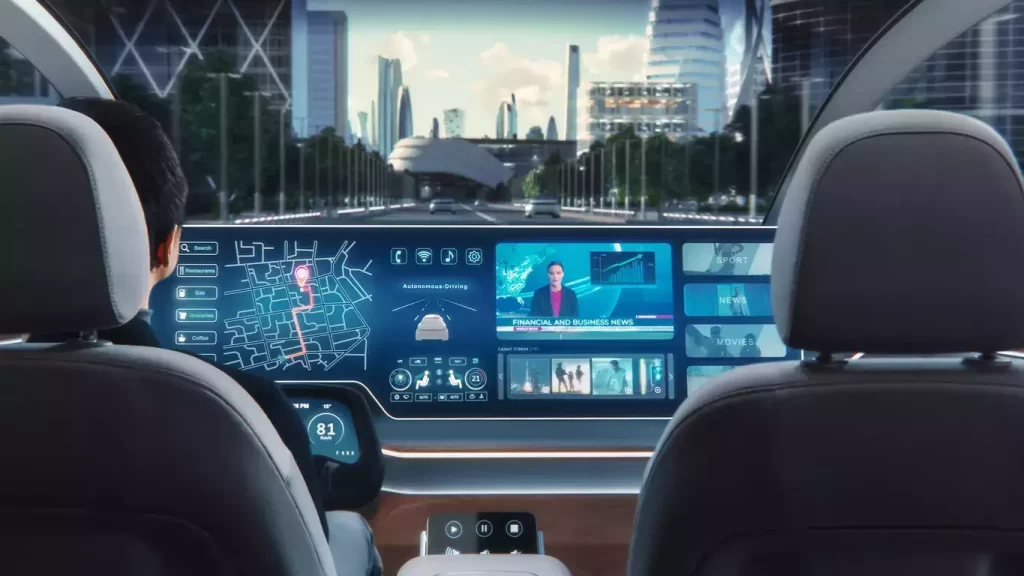The Evolution of Car Infotainment Systems

As consumer demand for technology that enhances driving experiences grows, so too have car infotainment systems become sophisticated hubs of connectivity and entertainment.
Car infotainment systems that offer enhanced user experiences can significantly elevate a vehicle’s brand image, but how have these technologies evolved over time?
The era of radios
At first, radios were the centerpiece of infotainment systems, providing drivers with their favorite tunes while on the road. Later came cassette decks and CD players for additional entertainment options; finally MP3 players with digital music services became ubiquitous to make driving even easier!
Bluetooth connectivity also enabled drivers to link their smartphones with infotainment systems and enjoy hands-free calling, audio streaming, GPS navigation and more. More recently, these infotainment systems have also been integrated with vehicle control and voice assistant systems to further enhance driving experiences.
Modern infotainment systems boast outstanding display technology, seamless smartphone integration and an increased focus on cybersecurity. When selecting a car, make sure it has an infotainment system that suits you well and test drive one with such an infotainment system before purchasing one.
The era of CDs
Infotainment systems have grown from basic radio units and cassette players to compact disc players, which improved digital data and quality, while new infotainment systems introduced touchscreens and intuitive user interfaces that mimic smartphone functionality.
This period saw the introduction of truly comprehensive infotainment systems into vehicles. Lexus led this trend when they unveiled an infotainment system that combined advanced vehicular functions with multimedia playback on an LCD display screen.
Infotainment systems continue to advance at an exponential rate. Their development is propelled by AI-led innovation, seamless smartphone integration, impressive display technology and increased cybersecurity concerns – trends which are revolutionizing driving experiences while improving safety globally.
The era of MP3 players
CD players will soon go the way of eight-track tape decks, freeing up space in dashboards for more advanced infotainment systems. MP3 players have become the favored solution, enabling drivers to store thousands of songs on one portable device.
Bluetooth technology was also adopted into car infotainment systems, enabling hands-free calling and music streaming from smartphones – marking the dawn of modern automotive electronics as we know it today.
Infotainment systems today typically boast expansive displays with high-resolution touch screens and familiar user interfaces similar to what can be found on smartphone devices. They can connect with smart automotive technologies like advanced driver assistance systems, vehicle-to-everything connectivity solutions and sensors as well as voice activation for an easy and seamless user experience.
The era of Bluetooth
Infotainment systems are designed to reduce driver distraction by employing sensors for proximity, gesture recognition and camera sensors that work together to provide safety-related data.
Manufacturers typically develop their own hardware platforms while some use Android Auto or Apple CarPlay to integrate smartphones. Both feature touchscreen interfaces similar to those found on smartphones as well as apps like Spotify and Waze for navigation and entertainment purposes.
Before selecting an infotainment system, it’s essential that you fully comprehend your personal needs and preferences. A system with an easy user interface may make operating it simpler; also consider your comfort with touchscreen versus knob-and-dial controls; you might prefer one over another or prefer something hybrid altogether.
The era of smartphones
Not too long ago, automobile owners embarked on road trips armed only with music and the people with whom they were traveling. Nowadays, modern vehicles feature more sophisticated infotainment systems that include GPS navigation, WiFi internet connection, video entertainment services and third-party apps than ever.
Today’s infotainment systems use standard communication protocols and offer seamless smartphone integration through Android Auto or Apple CarPlay, enabling drivers to mirror their phone screen while driving and access calls, messages, media streaming or media playback from their phone while driving. This enables drivers to stay safe.
Crisp, high-resolution touch screens with familiar interfaces help shorten learning curves compared to button clusters, thus helping minimize driver distraction and enhance safety. Some infotainment systems even integrate automotive sensors for functions like voice recognition and collision avoidance.
